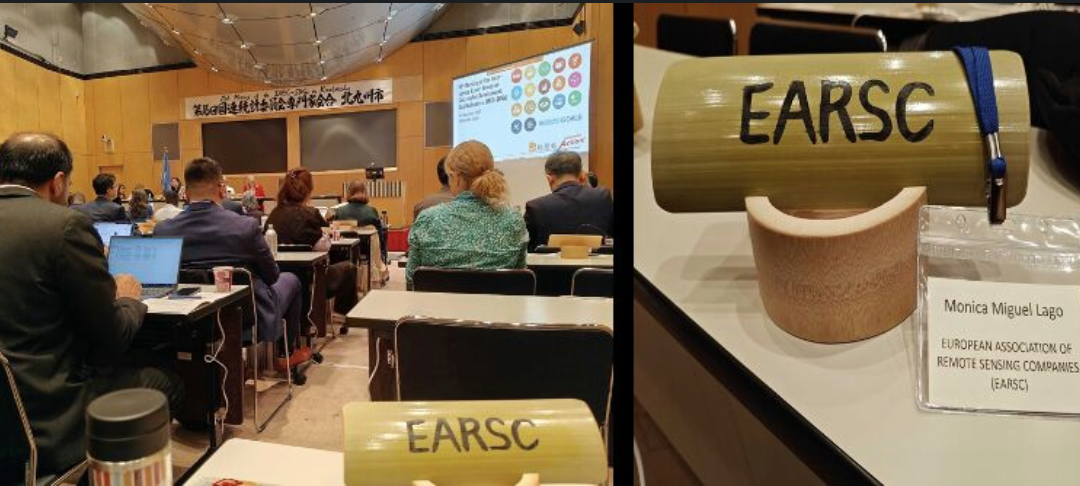At the 16ᵗʰ meeting of the Inter-Agency and Expert Group on SDG Indicators (IAEG-SDGs) in Kitakyushu, we presented SDGs-EYES services and demonstrated how Earth Observation (EO) can be embedded directly in SDG reporting and policy cycles. A clear takeaway across sessions was that geospatial had become central and that EO data, particularly Copernicus services, could be enhanced and operationalised to measure SDGs progress more consistently and transparently.
The IAEG-SDGs is the UN’s official forum where national statistical offices (NSOs) and custodian agencies set and refine the global indicator framework, review methods and metadata, and guide data flows to the Global SDG Database. Presenting SDGs-EYES here mattered because it placed our approach in front of the decision-makers who validate methodologies and run national reporting systems. It allowed us to align EO methods with official statistical standards, gather feedback on quality assurance and interoperability, and explore pathways for EO-derived indicators to feed national dashboards and global reporting, including the post-2030 discussion on how the next agenda will be monitored.
We showed how SDGs-EYES turned that vision into practice by building pre-operational pipelines that fit seamlessly into statistical workflows. The project co-designed with users to agree which indicators mattered, how they were computed, and what quality and validation required. On that foundation, we deployed a modular, open architecture that connected Copernicus, national and in-situ data so EO could flow naturally into official statistics. Over recent months, we proved the approach through operational pilots, tested end-to-end, with full traceability and alignment to regional and national policy frameworks. Together, these elements formed a coherent pathway from EO data to official indicators. We highlighted that the pilots followed policy-ready workflows, delivering what national dashboards and reporting need: auditable methods, transparent metadata, versioning, and quantified uncertainty.
Underpinning these results, we presented a three-layer, reusable platform supporting discovery, processing and access: (i) Data layer with curated, analysis-ready datasets; (ii) Processing layer with fully containerised workflows, orchestration and scheduling; (iii) Access layer with a user-friendly front end offering push-button tools and notebook access. Every output shipped with methods, full metadata and quantified uncertainty, audit-ready and interoperable with familiar portals.
We closed by inviting participants to explore the SDGs-EYES services, validate EO-derived indicators, and see how results flowed into global databases. Our message was simple: if EO strengthens the data infrastructure with greater transparency, comparability and timeliness, countries can accelerate progress where it is needed most.

